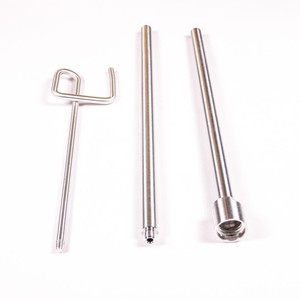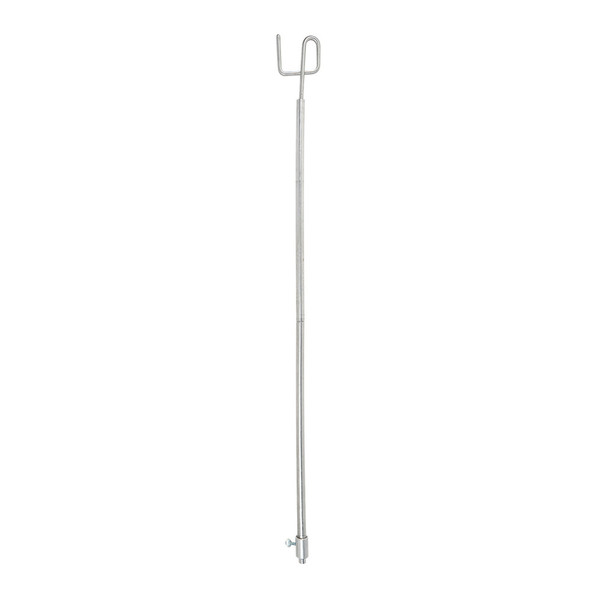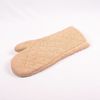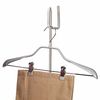Competitive Advantages
1. Made in the USA.
2. Our products are the originals.
3. We invented the product and process.
4. We are the industry leader.
5. Oldest (since 1940) and largest (currently 1,000 dealers serving over 45 countries) garment steamer manufacturer in the world.
6. 1 year parts and labor warranty on all units with a lifetime warranty on the stainless steel J-4000 boiler tank.
7. 24 / 7 / 365 ordering capabilities through www.allbrands.com
8. Fast Shipping.
9. A warm, friendly, knowledgeable and LIVE voice every time you call during business hours. As a matter of fact, the customer service representative that you speak with has completed a 2 week training course and knows how to build and repair Jiffy Steamers…they can help you.
10. Should your unit require repair, we have a 24 hour repair turn-around time…your steamer will be repaired and back on a UPS truck within 24 hours after your approval of the repair quote.
11. All our steamers are fully customizable with a host of options for steam head / hose attachments, cord plugs and voltage.
12. Each Jiffy Steamer is handcrafted in our Union City, Tennessee factory. We never compromise on quality, materials or workmanship. Take a look “under the hood” of our products. You will find stainless steel, brass, copper, incoloy and silicone braided color-coded wiring. This quality is simply not found in competitor’s products.
13. Hence our ultra-low products return percentage. Every unit is 100% tested and steamed before it leaves our assembly line.
14. Our staff is experienced…more than any other garment steamer manufacturer in the world with over 603 years (and counting) of manufacturing knowledge.
15. Our staff is dedicated…with an average tenure of 17 years employment at our company for our associates.
16. It takes, on average, 52 unique stages to build a Jiffy Steamer product within our factory. Care is taken at every step.
17. Use what the professionals use…Jiffy Steamers…our products can be found in over 95% of the chain retail clothing stores.
18. We build commercial-grade units across all of our product lines…travel, residential and industrial categories.
19. A new Jiffy Steamer is put into use, somewhere around the globe, every 6.57 minutes…you are in good company!
20. Not everyone can iron, but anyone can steam! The process is easily learned and mastered.
21. Our products are protected by multiple patents and trademarks.
A Closer Look into Garment Care
Steaming vs. Ironing
Your clothes are an investment. Don't you want to apply the safest, gentlest method for removing wrinkles?
To determine which method of removing wrinkles is the better option for fabric care, steaming and ironing were put to the test.
- Two identical 6" x 6" squares of black wool were purchased from a local fabric store.
- We steamed sample "A" for 1 minute with a Model J-2000 Jiffy ® Steamer.
- Sample "B" was ironed for 1 minute, on the proper heat setting, with a top-of-the-line residential iron.
- We then bagged, labeled, and submitted both samples to MVA Scientific Consultants in Norcross, Georgia for detailed magnification.
The Scanned Electron Microscope (SEM) images show any damage that may have occurred.
| Sample A - Steamed | Sample A - Steamed |
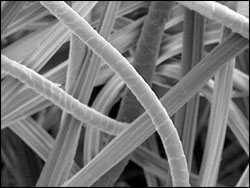 | 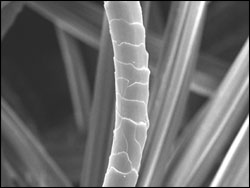 |
| 500x | 1000x |
| Sample B - Ironed | Sample B - Ironed |
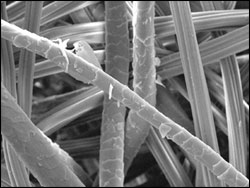 | 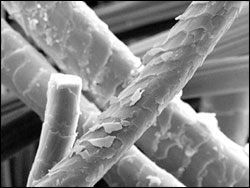 |
| 500x | 1000x |
The fibers in sample "A" are in near perfect condition due to the gentle nature of steam. However, the fibers in sample "B" are clearly distorted. You can easily recognize the damaged fibers caused by just one application of the iron's hot sole plate.
Unlike ironing, steam actually relaxes the fibers rather than crushing them.
Now that you have a closer look into garment care, use what the professionals use…
a JIFFY ® STEAMER!
Steam Kills Dust Mites
Do you or family members suffer from allergies?
A 2003 Environmental Protection Agency report stated that childhood asthma rates are doubling. The EPA report is the agency’s second comprehensive look at the environmental hazards to children’s health. The finding showed the percentage of children getting asthma has doubled in two decades, rising from 3.6 percent in 1980 to 8.7 percent, or 6.3 million children by 2001. The exact cause for the increase is unknown but researchers state a number of factors have been studied. Those range from exposure to dust mites, cockroaches and pesticides to tobacco smoke, ozone and soot. EPA officials are examining the role of indoor air pollutants, such as dust mites, especially since there have been modest improvements since 1990 in lessening exposure to outdoor air pollutants. The reduction of indoor factors will be the key to reversing this trend. 1
Dust Mites are microscopic creatures related to the spider family. They are invisible to the human eye and are about 0.3mm in length. They live on human skin flakes. They are most prevalent in the bedroom where millions can exist in your mattress, boxspring, pillows and comforters. They are also found in upholstered furniture, carpeting and other fabric items. Dust mites produce 20 or more fecal pellets per day, which is the primary allergen to humans. We inhale these allergens while sleeping and during periods when these particles become airborne such as when vacuuming and disturbing the infested fabrics.
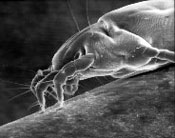
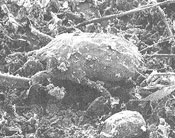
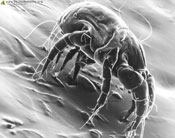
It has been proven that dust mites and their allergen Der p1 are a major factor in allergic reactions. A key to controlling allergic reactions is controlling the dust mite population in your home. Lower mite populations lower the amount of mite allergen, Der p1. Other clinical studies have revealed that avoidance of dust mite allergens in early childhood can prevent the onset of asthma in adults. A study as reported in the Journal of Clinical and Experimental Allergy tested the feasibility and effectiveness of using a portable, domestic steamer for the control of dust mites, its effects on mite populations and concentration of the allergen Der p1.2
A domestic steamer was used to treat carpet squares that were seeded with a known number of dust mites. The number of live mites was monitored for 4 months and in 8 test squares and 8 control squares. Measurement of mite populations and allergen levels were taken before and after steaming with a domestic steamer.
The results showed two significant findings. No live mites were found in any of the eight steam-treated carpet squares. In contrast, the numbers of live mites extracted from the eight-control squares rose from a mean of 11 on day 3 to 185 four months later. The fact that no live mites were found in any of the eight steam-treated carpet squares at any time during the study shows that steaming is a highly efficient method of killing house dust mites. More significant for allergy sufferers is the measurement of the allergen Der p1. There was no difference in the concentration of Der p1 in dust samples of untreated carpets, but in those which had been steam cleaned there was an average 87% fall in the concentration of Der p1.
The study concluded with:
"Steaming requires nothing more than water and heat and therefore is non-polluting compared with mite eradication methods that require the use of detergents and other chemical agents. Furthermore, the design of domestic steamers, [such as the Jiffy® Steamer], renders it safe for domestic use as long as the operating instructions are followed. In addition, we observed no damage, or shrinkage of the fabric, nor discoloration and the carpet dried within a half-hour of treatment. There is no indication of prolonged retention of residual moisture, as with wet-vacuum cleaning which may promote mite population growth.
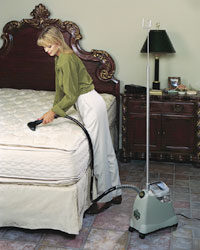 Finally, steaming as reported herein is the only method of house dust mite control that combines effective killing of mites and substantial reduction in allergen concentrations within a single system. These factors, taken together, render domestic steamers, [such as the Jiffy® Steamer], especially suitable for the management of dust mites and their allergens in the homes of allergy sufferers."
Finally, steaming as reported herein is the only method of house dust mite control that combines effective killing of mites and substantial reduction in allergen concentrations within a single system. These factors, taken together, render domestic steamers, [such as the Jiffy® Steamer], especially suitable for the management of dust mites and their allergens in the homes of allergy sufferers."
For additional information and reading on maintaining a healthy home, you may want to consider a book by Jeffrey C. May titled "My House Is Killing Me! The Home Guide for Families with Allergies and Asthma".3
Helpful Links for Dust Mite/Asthma Information:
http://www.epa.gov/iaq/asthma/index.html
http://www.epa.gov/iaq/asthma/triggers/index.html
http://www.ozemail.com.au/~lblanco/
1 As reported by Associated Press February 26, 2003
2 MJ Coloff, C Taylor, TG Merrett. The use of domestic steam cleaning for the control of house dust mites. Clinical and Experimental Allergy 1995 25: 1061-6.
3 May, Jeffrey C(2001). My House is Killing Me! The Home Guide for Families with Allergies and Asthma. John Hopkins University Press.


